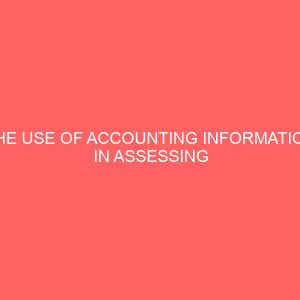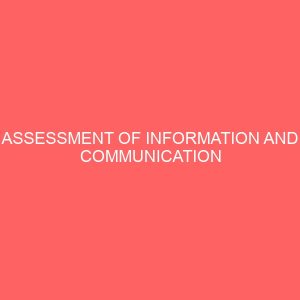Description
Abstract
This study investigates the difficulties faced by Igbo second language learners of English spelling. It propose solutions to students learning problems in order to improve the teaching and learning of English spelling in second language situation.
The study revolves around the history of English spelling. The study also shows that English is ridiculous, deceptive, and inconsistent as a result of borrowing from other languages. The inconsistency between spelling and pronunciation in English is because there is no one to one correspondence between graphemes and Phonemes.
A sample of one hundred students from a population of four secondary schools in Nnewi North local government Area was used. Data was collected through dictation test. The analysis was based on four type of error: omission, addition. double marking and misordering.
The inconsistencies of English spelling also have a lot of implication in the students learning process with a marked evidence of unintelligibility and defective pronunciation.
Table of Contents
Title Page i
Approval Page ii
Dedication iii
Acknowledgments iv
Abstract v
Table of Contents vi
Chapter One: Introduction
1.1 An Overview 1
1.2 The Status and Roles of English Language in Nigeria 1
1.3 Nigerian Language Syllable Structure 3
1.4 Pronunciation and Spelling 5
1.5 Background to the Study 7
1.6 Statement of the Problem 10
1.7 Aim of the Study 11
1.8 Significance of the Study 12
1.9 Scope of Study 13
1.10 Definition of Terms 14
1.11 Conclusion 16
Chapter Two: Literature Review
2.1 Introduction 17
2.2 Historical Development of Spelling 17
2.3 The Genesis of Ambiguity 19
2.4 Historical Reasons 20
2.4.1 Roman Missionaries writing of the Old English 20
2.4.2 The French Scribes Spelling of Old English 21
2.4.3 The Introduction of Printing 21
2.4.4 Silent Letters 22
2.4.5 Borrowing 23
2.5 Spelling to Sound Correspondences 25
2.5.1 Spelling to Sound Correspondence of Vowel Sounds 25
2.5.2 Spelling to Sound Correspondence Consonant Sounds 27
2.6 Homophones 28
2.7 Homographs 30
2.8 Spelling Problems in English 33
2.8.1 Silent Letters 34
2.8.2 Swallowed Syllables 35
2.8.3 Three Syllables Pronounced as Two Syllables 35
2.8.4 Four Syllables Pronounced as Three Syllables 35
2.8.5 Homophones 35
2.8.6 Same SoundDifferent Spelling 35
2.9 Approaches to Spelling 36
2.9.1 Commonly Misspelt Words 37
2.10 Spelling Differences between American and British English 44
2.11 Spelling of Verbs 47
2.12 Implications of the Inconsistencies of Spelling English Words to ESL Learners 49
2.12.1 Defective Pronunciation 50
2.12.2 Unintelligibility 51
2.12.3 Spelling Errors 53
2.13 Reformers in English Spelling 54
2.14 Conclusion 55
Chapter Three: Research Design and Methodology
3.1 Introduction 56
3.2 Selection of Sample 56
3.3 The Design of Study 56
3.4 The population of Study 57
3.5 The Sample Size 57
3.6 The Research Instrument 58
3.7 Method of Data Collection and Administration 58
3.8 Delimitation 58
3.9 Method of Data Analysis 59
3.10 Conclusion 59
Chapter Four: Data Analysis and Presentation
4.1 Introduction 60
4.2 Types of Errors 60
4.2.1 Errors of Omission 61
4.2.2 Errors of Addition 62
4.2.3 Double Marking Errors 63
4.2.4 Misordering or Misplacive Errors 64
4.3 Total Errors 65
4.4 Researchers Observation 66
4.5 Conclusion 67
Chapter Five: Summary of Findings, Recommendations and Conclusion
5.1 Introduction 68
5.2 Summary of Findings 68
5.3 Guides to Good Spelling 69
5.4 Spelling Rules 72
5.4.1 Using i before e 72
5.4.2 Dropping the Final e 72
5.4.3 Changing a Final y to i 74
5.4.4 Doubling a Final Consonant 75
5.5 Recommendations 78
5.5.1 To the Students 79
5.5.2 To the Teachers 80
5.5.3 To the Parents 80
5.5.4 To the Ministry of Education 80
5.5.5 Suggestions for Further Research 81
5.6 Conclusion 81
Works Cited 83
Appendixes








Reviews
There are no reviews yet.